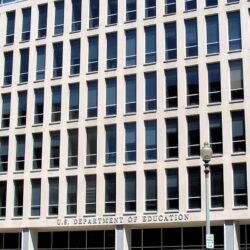The Importance of NSF’s SBE Directorate and a Fond Farewell to its First Leader
On July 18, Cora Marrett announced that she will be leaving the National Science Foundation in late August, to retire and return to Wisconsin. She has served NSF long and well. Cora was the first assistant director for the Social, Behavioral, and Economic Sciences (SBE) directorate from 1992-1996. After a little more than a 10-year hiatus, she returned to head NSF’s Education and Human Resources Directorate, becoming the first person to ever lead two NSF directorates. In 2009, Cora became acting deputy director (the Senate finally confirmed her in that position in 2011). She has served as acting director of the foundation twice; for five months after Arden Bement left in 2010, and for a year following the departure of Subra Suresh in 2013.
During the past year, she been forced to defend NSF against the bullying tactics of House Science Committee Chairman Lamar Smith, R-Texas, and his attempts to denigrate the research, particularly in the SBE sciences, that NSF supports. With the arrival of new NSF director France Córdova, Marrett has decided to end her exemplary public service to the SBE and wider scientific community.

Howard J. Silver served for a quarter century as the executive director of the Consortium of Social Sciences Agencies. His blog appears monthly at Social Science Space.
The idea of a separate directorate for the social and behavioral sciences had been floating around for a long time. At one point in the mid-1960s senators Fred Harris, D-Oklahoma, and Walter Mondale, D-Minnesota, had proposed a separate National Foundation for the Social Sciences. This idea did not gain much traction, even in the social science community.
In 1988 during a visit to the University of Michigan, I met with James Duderstadt, then the university’s president and a member of the National Science Board, NSF’s policy-making body. Expressing my frustration about the role of the social and behavioral sciences at NSF, he suggested trying to get a separate directorate. At the time, these sciences were part of the Biological, Behavioral, and Social Sciences (BBS) directorate, which had always been led by a biologist. In 1989, hearings held by the Research Subcommittee in the House, chaired by Rep. Doug Walgren, D-Pennsylvania, heard Carnegie Mellon professor and Nobel Prize winner Herbert Simon also advocate for a social and behavioral science directorate at NSF.
This led Mary Clutter, the assistant director for BBS, who at the time was also interested in reorganizing how NSF supported biological science, to appoint a task force to examine NSF’s organization of its support for the disciplines under her jurisdiction. The task force was chaired by biologist Paul Magee, then at the University of Minnesota, and included social and behavioral scientists, Stephen Anderson, Richard Berk, Nancy Cantor, Joan Huber, Anne Krueger, Risa Palm, Charles Plott and Peter Rogerson. After a series of hearings that included testimony from 55 scientific groups, including the Consortium of Social Science Associations that I directed, the task force’s report, Adapting to the Future, was released in November 1991. The report’s major recommendation was “that the different orientations and needs in the two clusters of disciplines, as well as the exciting potential in both,constituted a strong intellectual and practical argument for creating two new Directorates, one for biology and one for SEPS [Social, Economic, and Psychological Sciences].”
In March 1991, Walter E. Massey became NSF’s director. With the recommendation of the task force, his own desire to reorganize NSF, and some pressure from social science friends on Capitol Hill, such as House Science Committee Chairman George Brown, D-California and the previously mentioned Walgren, Massey agreed to the creation of the new directorate. With Duderstadt now chairing the National Science Board, Massey’s reorganization and the new directorate received approval. It would now be called Social, Behavioral, and Economic Sciences, and it also incorporated NSF’s Office of International Science as well as the statistical arm of the foundation.
Massey asked a number of prominent social and behavioral scientists to assure him that they could get a superior person to run the new directorate. He had known Cora Marrett from their service together on the commission that investigated the March 1979 Three Mile Island nuclear reactor incident. She agreed to serve and the directorate got off the ground in early 1992.
The importance of the SBE directorate has been the addition of the voice of a social or behavioral scientist to NSF’s weekly senior staff meetings. Following Marrett, the directorate has been led by: psychologist Bennett Bertenthal, then at the University of Chicago; Norman Bradburn, another psychologist and statistician, who came from his post as provost at Chicago; David Lightfoot, a linguist, who built a highly-rated department at the University of Maryland; Myron Gutmann, a historian who led the Interuniversity Consortium for Political and Social Research; and soon Fay Lomax Cook, former director of Northwestern University’s Institute for Policy Research.
The directorate has also provided legitimacy within the foundation and the rest of the scientific community for these sciences. It has led to creative interdisciplinary activities at NSF, for example the Coupled Human and Natural Systems program, and to international cooperation with social science groups in other countries, notably the Economic and Social Research Council in the United Kingdom. It also allowed a social and behavioral scientist, yours truly, to chair the major interdisciplinary advocacy group for NSF, the Coalition for National Science Funding.
Another justification for the directorate is the increased visibility the SBE sciences have received. The expertise of social and behavioral science researchers has been heard on Capitol Hill and elsewhere through hearings, briefings supported by COSSA and other groups, and in special presentations to individual members of Congress and the Executive Branch and their staffs.
The downside, however, has been that with increased visibility has come heightened scrutiny and questioning of the rationale for federal support for SBE. Yet, having the directorate has been a focus point for defending against the attacks. Upon returning to Social Science Space in September, I will examine the last two decades of threats to the directorate, including the current situation.
All the best for the rest of the summer, and all the best to Cora Marrett in her retirement!































































































